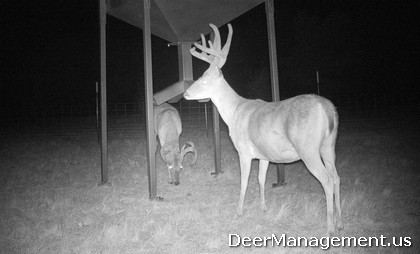Question: “We are interested in whitetail deer management and started a supplemental feeding program in January. I am trying to decide whether or not to continue feeding 20% protein pellets past the middle of September. Not sure. Also thinking that we will feed until it rains and then stop, but there are no clouds in sight.
I know of ranches that feed protein pellets year round and even one that is stops in early fall regardless of the habitat conditions on their property. I know supplemental feeding definitely helps the deer, and does still have fawn that they are nursing. Currently feeding protein, whole cotton seed, and some alfalfa hay. Whitetail deer are in good shape right now. What should we do?”

Answer: The answer to your supplemental feeding question depends on your deer management goals and objectives. There is no black and white right or wrong answer because it depends. Some landowners will feed deer year around because they want to grow the largest and healthiest deer possible. It also helps when you don’t have to harvest a large number of animals (already low or stable numbers) and money is not a factor.
Some hunters want to feed to grow bigger antlers and larger does, but have a set budget, so they then bait with corn during the fall to reach their deer harvest goals. Year-round protein feeding can make it hard to see deer to harvest. Some managers must stop feeding protein and use bait corn so they can harvest the large numbers of deer required to keep the herd healthy.
That said, most deer managers will feed protein during the stress periods of winter and summer, switching to timed spin feeders loaded with corn to lure deer into a specific location for selective harvest. Food plots and free-choice supplemental feed gives whitetail the opportunity to avoid daylight observation by using darkness to their advantage. You can’t manage what you can’t see.
However, if the density on your property is low enough and your fawn survival is not too high, then there is no need to harvest a large number of deer. In that case, healthy, nocturnal deer are not an issue. Supplemental feeding is a great deer management tool, but it’s not the only one. It must be used as a tool to improve herd health, or removed to improve deer harvest. Whether you feed year-round or not depends on where the deer numbers on your property fall.